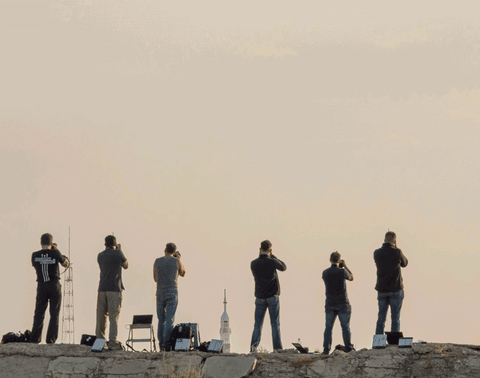Happy #Darwin Day!

Happy #Darwin Day!
More Posts from Sciencephysics4all-blog and Others

Poker game #sciphy4all #science #physics #programming #computer #computers #pc#perl #python #basic #c #javascript #php #java

Merry Christmas with geometry!

- Excuse me. For the fractal geometry? - At the end of the corridor.

LIFTOFF!
On July 7, three crew members launched from Earth; headed to their new home on the International Space Station.
Crewmembers Kate Rubins of NASA, Anatoly Ivanishin of Roscosmos and Takuya Onishi of the Japan Aerospace Exploration Agency (JAXA) will spend approximately four months on the orbital complex, returning to Earth in October.
Photo Credit: (NASA/Bill Ingalls)
Make sure to follow us on Tumblr for your regular dose of space: http://nasa.tumblr.com


A ferrofluid clock #sciphy4all #science #physics #ferrofluid #clock

Thermal Processes with Ideal Gas
What’s Up for July 2016?

What’s Up for July? Use Saturn as your guide to a tour of the summer Milky Way.

Saturn continues to dazzle this month. Its wide rings and golden color provide a nice contrast to nearby Mars and Antares. Below Saturn lies the constellation Scorpius, which really does look like a scorpion!

Through binoculars or telescopes you’ll be able to spot two pretty star clusters: a compact (or globular) cluster, M-4, and an open cluster, M-7. M-7 is known as Ptolemy’s cluster. It was observed and cataloged by Greek-Egyptian astronomer Ptolemy in the first century.

Climbing north, you’ll be able to spot the teapot shape which forms part of the constellation Sagittarius. The center of the Milky Way is easy to see. It looks like bright steam rising from the teapot’s spout.

With difficulty, a good star chart and a medium-sized telescope you can locate faint Pluto in the “teaspoon” adjacent to the teapot.

A binocular tour of this center core of the Milky Way reveals many beautiful summer sky objects. We first encounter the Eagle Nebula, M-16. Part of this nebula is featured in the famous and beautiful “Pillars of Creation” images taken by our Hubble Space Telescope.

You’ll have to stay up later to see the northern Milky Way constellations, which are better placed for viewing later in the summer and fall. Cygnus the swan features the prettiest supernova remnant in the entire sky, the Veil Nebula. It’s too big to fit in one eyepiece view, but luckily there are three sections of it.

Look between Aquila and Cygnus to find three tiny constellations: Delphinus the dolphin, Vulpecula the fox and Lyra the lyre (or harp). M-57, the Ring Nebula, is the remains from a shell of ionized gas expelled by a red giant star into the surrounding interstellar medium. It’s pretty, too! Look in Vulpecula for the Dumbbell, another planetary nebula.

We’ll end our summer tour with Lacerta the lizard and Draco the Dragon. Lacerta is home to a star with an extrasolar planet in its orbit, and Draco, facing away from the center of our Milky Way, is a treasure trove of distant galaxies to catch in your telescope.
Watch the full What’s Up for July 2016 video HERE.
You can catch up on current missions and space telescopes studying our Milky Way and beyond at www.nasa.gov.
Make sure to follow us on Tumblr for your regular dose of space: http://nasa.tumblr.com
Τεστ γνώσεων!
Kirk vs. Spock: NASA Trivia Time!
Star Trek has inspired generations of NASA employees to boldly go exploring strange new worlds and develop the technologies for making science fiction become science reality. We recently caught up with Star Trek Beyond actors Chris Pine (Kirk) and Zachary Quinto (Spock) and quizzed them on some NASA trivia. Before you take a look at their answers (video at bottom of post), take a stab at answering them yourself! See how well you do:

1. What does the first “A” in NASA stand for? A) Adventure B) Aeronautics
2. On July 4 this year, we sent a spacecraft into orbit around what planet? A) Jupiter B) Pluto
3. What do scientists call a planet that orbits a star outside our solar system? A) Exoplanet B) Nebula
4. Although it never flew in space, what was the name of the first space shuttle? A) Discovery B) Enterprise
5. What is a light-year a measurement of? A) Time B) Distance
6. When looking for habitable worlds around other stars, we want to find planets that are what? A) Goldilocks zone planets B) Class M Planets
7. Olympus Mons is the largest known volcano in our solar system. What planet is it on? A) Mars B) Earth
8. Which NASA satellite made an appearance in Star Trek the Motion Picture? A) Voyager B) Galileo
9. Who was the first American woman in space? A) Sally Ride B) Janice Lester
10. While developing life support for Mars missions, what NASA Spinoff was developed? A) Enriched baby food B) Anti-gravity boots
11. What technology makes replication of spare parts a reality on the International Space Station? A) Closed-Loop System B) 3-D Printer
12. What two companies are contracted by NASA to carry astronauts to and from the space station? A) Boeing and SpaceX B) Amazon and Virgin Galactic
ANSWERS: 1:B, 2:A, 3:A, 4:B, 5:B, 6:A, 7:A, 8:A, 9:A, 10:A, 11:B, 12:A
Now that you’ve tested your own space knowledge, find out how Zachary and Chris did at NASA Trivia:
Learn more about NASA + Star Trek at: http://www.nasa.gov/startrek
Make sure to follow us on Tumblr for your regular dose of space: http://nasa.tumblr.com

